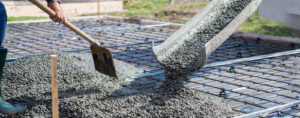The Indian cement market in 2025 has shown consistency, with only minor fluctuations. For anyone planning construction — from homeowners in small towns to contractors managing large infrastructure projects — the first question is inevitably: “What is the cement price today?” This single figure can significantly impact project budgets, timelines, and even material selection.
The slowdown caused by monsoons and the steady urban demand, combined with manufacturers’ conservative yet optimistic outlook, are shaping the market scenario. While seasonal slowdowns are evident in certain regions due to wet construction sites, metropolitan areas continue to witness strong demand, keeping price variations minimal. This means it is not enough to simply know the numbers — understanding the factors behind them is key to making a smart purchase decision.
Regional Realities and Urban Resilience
Across India, the retail cement selling price is approximately ₹360–₹420 per 50 kg bag, depending on the brand, grade, and geographical location. The stability of rates in central markets usually reflects the close ties between price, production levels, and demand.
In Delhi, cement prices range between ₹380–₹400, driven by steady demand from real estate development, infrastructure expansion, and commercial growth in the national capital and the NCR. Ongoing public projects, such as metro line extensions and road construction, further support this steady yet high demand. Additionally, Delhi’s proximity to manufacturing hubs in Haryana and Rajasthan helps reduce transportation costs and ensures uninterrupted supply.
Factors Driving Price Stability
The stability of cement prices is not accidental. Manufacturers carefully balance production and distribution to avoid shortages that could push rates higher. Key input materials, such as coal and pet coke, have also remained steady in cost, enabling producers to maintain pricing.
While rains slow down rural construction in states like Odisha, Bihar, and Assam, metro cities such as Delhi, Mumbai, and Bengaluru offset this dip with sustained demand. Government initiatives like Bharatmala and Smart Cities Mission further support the market.
Cement Price in Delhi: A Closer Market Analysis
In Delhi NCR, cement prices are shaped by more than just supply and demand. Large-scale projects — from multi-storey housing in Noida to flyover construction — generate continuous consumption.
Intense competition among top cement brands keeps pricing in check, with frequent adjustments in offers and bulk purchase deals ensuring relative stability.
Cement Price Development and Forecast
Although current cement prices remain in a stable range, it is important to adopt a forward-looking perspective. Post-monsoon months, coupled with increased government infrastructure spending, are expected to push prices up by ₹10–₹25 per bag between October and January. Buyers can plan procurement accordingly to optimize costs.
Cement Price Range by Region and Grade (Indicative)
| Region | OPC 53 Grade (₹ per 50kg bag) | OPC 43 Grade (₹ per 50kg bag) | PPC Cement (₹ per 50kg bag) |
| North India (Delhi NCR, Punjab, Haryana, Rajasthan) | ₹380 – ₹420 | ₹360 – ₹400 | ₹340 – ₹380 |
| South India (Tamil Nadu, Karnataka, Kerala, Andhra Pradesh) | ₹390 – ₹430 | ₹365 – ₹405 | ₹345 – ₹385 |
| East India (West Bengal, Odisha, Assam, Bihar) | ₹375 – ₹415 | ₹355 – ₹395 | ₹335 – ₹375 |
| West India (Maharashtra, Gujarat) | ₹385 – ₹425 | ₹365 – ₹405 | ₹345 – ₹385 |
Regional-Based Purchasing Strategy
- Monitor Prices Closely: Even small changes in a stable market can affect project budgets.
- Bulk Buying During Low Demand: Monsoon months in rural areas often see more stable or lower prices.
- Leverage Local Supply Chains: Proximity to cement plants can help cut transportation costs.
- Match Grade to Application: Use OPC 53 for heavy structures, OPC 43 for residential construction, and PPC for plastering or finishing work.
Why Buying at the Right Time Matters
Purchasing at the right time helps stabilize budgets, especially for large projects. Fixing prices during stable phases allows big projects to avoid cost overruns. For smaller works, monitoring daily rates can help take advantage of short-term dips.
Season Ahead Outlook
The Indian cement industry remains balanced — prices are stable, input costs are under control, and demand remains predictable. Whether for home building or large-scale infrastructure, keeping track of cement prices and regional trends can help buyers plan smartly for the coming months.






